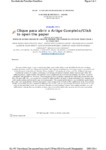Use este identificador para citar ou linkar para este item:
http://www.alice.cnptia.embrapa.br/alice/handle/doc/975611Registro completo de metadados
| Campo DC | Valor | Idioma |
|---|---|---|
| dc.contributor.author | JOELE, M. R. S. P. | pt_BR |
| dc.contributor.author | LOURENÇO JUNIOR, J. de B. | pt_BR |
| dc.contributor.author | NAHUM, B. S. | pt_BR |
| dc.contributor.author | NERES, L. de S. | pt_BR |
| dc.contributor.author | LOURENÇO, L. de F. H. | pt_BR |
| dc.contributor.author | RODRIGUES, E. C. N. | pt_BR |
| dc.contributor.author | NORONHA, G. N. | pt_BR |
| dc.date.accessioned | 2014-01-10T11:11:11Z | pt_BR |
| dc.date.available | 2014-01-10T11:11:11Z | pt_BR |
| dc.date.created | 2014-01-10 | pt_BR |
| dc.date.issued | 2013 | pt_BR |
| dc.identifier.citation | In: CONGRESSO BRASILEIRO DE BUIATRIA, 10.; SEMANA DO MÉDICO VETERINÁRIO DO PARÁ, 37.; SIMPÓSIO PARAENSE DE MEDICINA VETERINÁRIA, 5., 2013, Belém, PA. Anais... Belém, PA: Associação Brasileira de Buiatria, 2013. | pt_BR |
| dc.identifier.uri | http://www.alice.cnptia.embrapa.br/alice/handle/doc/975611 | pt_BR |
| dc.description | The aim of this study was to evaluate the fatty acid profile of the meat of buffalo finished in creating Traditional Systems (ST) and Silvopastoral (SSP) with supplemental feeding. The experiments were performed in the Research Units Animal "Senator Álvaro Adolpho", silvopastoral system and "Dr. Philibert Camargo, "traditional system of creation, belonging to Embrapa Amazônia Oriental, Belém-Pará, Brazil. After the fattening period, eight months, the animals were slaughtered at a commercial abattoir and their carcasses identified, refrigerated for 24 hours. The Longissimus dorsi (kebabs) retained the right half carcass between the 12th and 10th ribs, was ground and stored for determination of acids in lipids extracted from samples and cold reading esters performed by gas chromatography. The experimental design was completely randomized, the data were evaluated by ANOVA and means were compared by 't' test at 5% significance level. The analysis of fatty acid profile reveals a statistical difference (P <0.05), only the percentage of myristic acid (C14: 0) and polyunsaturated fatty acids. In conclusion, therefore, that breeding systems and supplementation are not sufficient to indicate the use of either system, since it must be taken into account also the environmental, social and economic. | pt_BR |
| dc.language.iso | por | pt_BR |
| dc.rights | openAccess | pt_BR |
| dc.subject | Sistemas de criação | pt_BR |
| dc.subject | Qualidade da carne | pt_BR |
| dc.subject | Suplementação alimentar | pt_BR |
| dc.title | Perfil de ácidos graxos de carne de búfalos terminados em sistemas tradicional e silvipastoril. | pt_BR |
| dc.type | Artigo em anais e proceedings | pt_BR |
| dc.date.updated | 2014-01-10T11:11:11Z | pt_BR |
| riaa.ainfo.id | 975611 | pt_BR |
| riaa.ainfo.lastupdate | 2014-01-10 | pt_BR |
| dc.contributor.institution | MARIA REGINA SARKIS PEIXOTO JOELE, IFPA; JOSÉ DE BRITO LOURENÇO JUNIOR, UEPA; BENJAMIM DE SOUZA NAHUM, CPATU; LILAINE DE SOUSA NERES, UFPA; LUCIA DE FATIMA HENRIQUES LOURENÇO, UFPA; ELLEN CRISTINA NABIÇA RODRIGUES, IFPA; GERLANE NUNES NORONHA, UFPA. | pt_BR |
| Aparece nas coleções: | Artigo em anais de congresso (CPATU)  | |
Arquivos associados a este item:
| Arquivo | Descrição | Tamanho | Formato | |
|---|---|---|---|---|
| 325.pdf | 126.85 kB | Adobe PDF |  Visualizar/Abrir |









